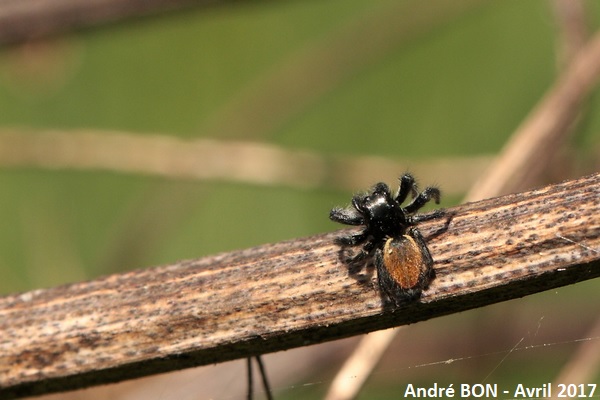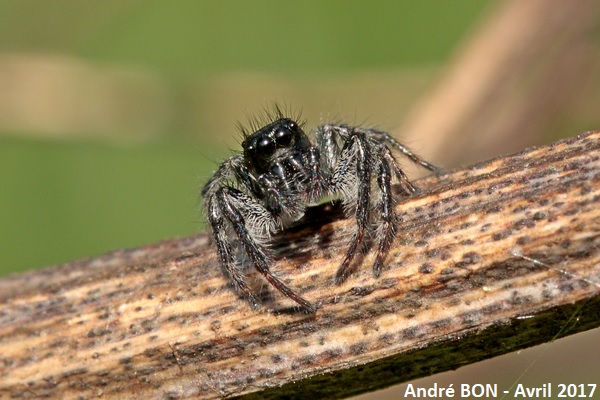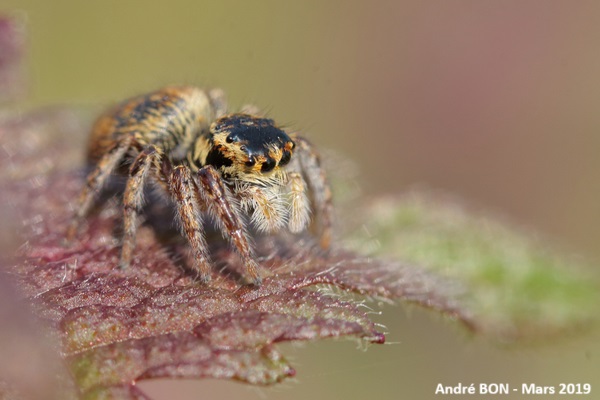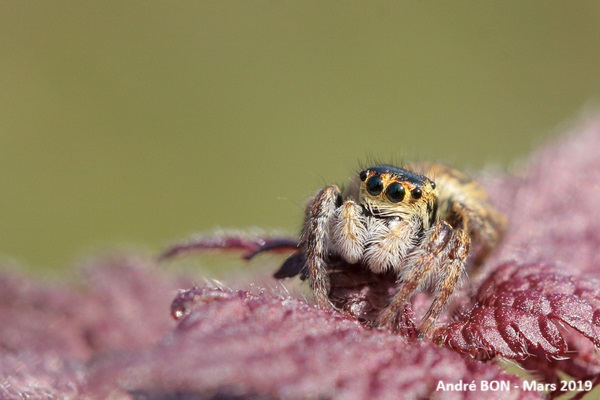



| Carrhotus xanthogramma (Latreille, 1819) |




|
|
Scientific name: Carrhotus xanthogramma (Latreille, 1819) Common name: French name: Saltique orangée Order: Araneae Family: Salticidae Size: 5 to 9 mm. Males are slightly smaller than females. Biotope: On tree trunks and shrubs, in bushes and low growing vegetation. Web: No web. Spiders of the Salticidae family chase by looking at preys with their big size eyes. They move by jumping. Observation period: April to July. Geographic area: Palaearctic region, missing in the British Isles, in Scandinavia and in the other northern regions. |
Carrhotus xanthogramma shows an important sexual dimorphism. Males have a black cephalothorax and black legs. The abdomen is orange with some lighter yellow colour at the base and a triangular cardiac patch. Females and juveniles are more variable with an abdomen that can vary from beige to orange or to dark brown. They can be difficult to identify because the markings described below are sometimes missing. The fore eyes are circled with reddish orange above a lighter coloured area. The upper side of the cephalothorax bears two whitish streaks followed by a central triangular patch of the same colour. There is a yellowish band on the sides and the back of the cephalothorax. The abdomen is sometimes marked with four pale spots followed by chevrons. Females can be mistaken with those of Evarcha arcuata. They lack the thin black line in the middle of the beginning of the abdomen that this species shows. |
| [To know more about the Carrhotus xanthogramma] [Next picture] [Top] |

|
Male Carrhotus xanthogramma are easy to identify, there is no risk of confusion. It is much more difficult for females. I thought I saw some nearby but a more detailed examination of my shots directed me to Evarcha arcuata which is also abundant at the same place. |
| [To know more about the Carrhotus xanthogramma] [Next picture] [Previous picture] [Top] |

|
Front view. |
| [To know more about the Carrhotus xanthogramma] [Next picture] [Previous picture] [Top] |

|
The eyes circled by reddish orange, a whitish central spot on the cephalothorax and a yellowish band on the sides of the cephalothorax, all these criteria lead to a female Carrhotus xanthogramma. |
| [To know more about the Carrhotus xanthogramma] [Previous picture] [Top] |

|
Front view. |